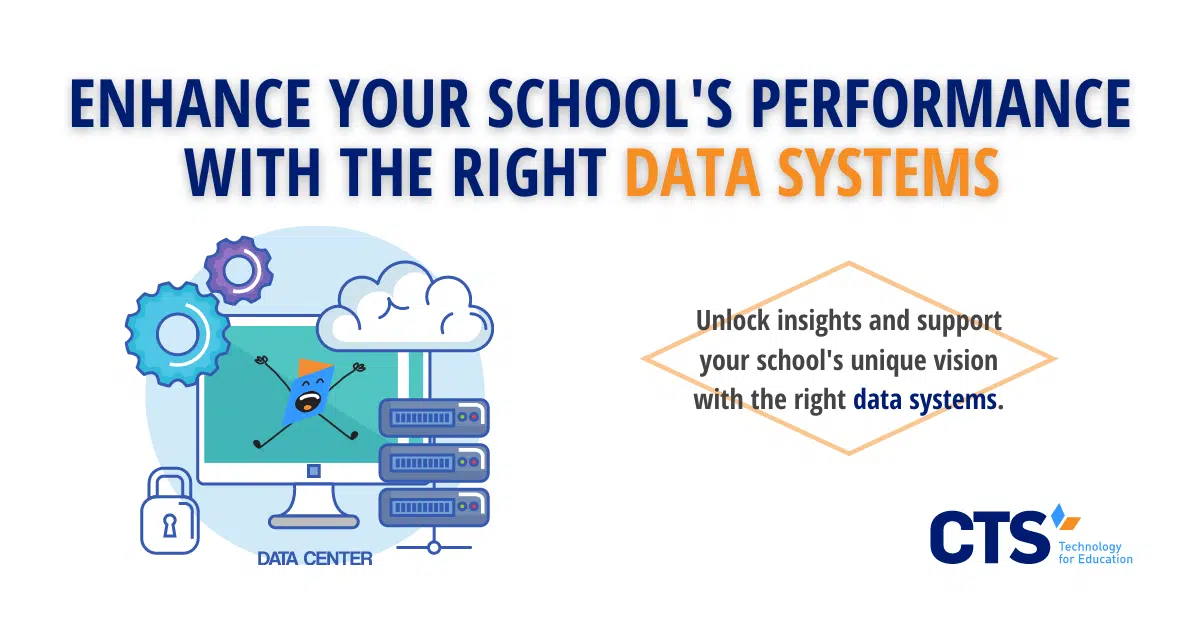School data is increasingly used to drive both instructional and non-instructional decision-making.
From student test scores to teacher evaluations, social-emotional learning targets, and Common Core-aligned interim assessments, conversations around student data are increasingly at the heart of schools’ instructional programming.
Identifying ways to effectively collect, analyze, and implement findings from instructional and social-emotional datasets are critical to improving student achievement. The market for systems that support data analysis efforts is vast, leaving many school leaders overwhelmed with an ecosystem of choices that, while similar in many respects, include key differences with implications for schools’ broader data integration efforts.
Before purchasing new systems, or even evaluating those already in existence, school leaders should get back to basics: what data points does the school want to collect and analyze to improve student achievement? How do the existing systems accomplish or fall short of these goals? Perhaps most importantly, how can datasets better integrate with one another to provide still more insights into student and teacher performance?
Before procuring a new data system, ask yourself: are my existing systems sufficient?
While it may be tempting to purchase the latest-and-greatest data and assessment system, many student information systems, like Powerschool, for instance, already have at least some of the features included in newer platforms.
Custom reporting features, in which multiple strands of student data are placed alongside one another, have grown increasingly sophisticated, even among more established student information systems. Simply compiling student GPAs, attendance rates, suspension and expulsion information together, for example, can shed light on key trends among a school’s population. If the idea is to simply identify these trends, schools may not need to acquire a new system to accomplish their goals.
Across systems, determining how datasets speak to one another is key to unlocking insights.
Of course, few data and assessment or student information systems meet 100% of a school’s needs. Many schools maintain both a student information system that houses demographic and scheduling information, as well as an additional data and assessment system that serves as a hub for student testing data.
While the latter system may depend on the former for certain information—typically via an SFTP connection—it’s the data and assessment system that does the work, automatically generating reports based on student test data.
And yet, it’s often difficult to generate all of the insights connections between systems can offer. A school that uses Illuminate, for example, may not make use of the platform’s behavior intervention features populated from data in PowerSchool or another school culture platform. By contrast, a school with seamless integration among all of its data platforms is better positioned to generate the type of highly specific insights that can drive teacher practice.
Most datasets have at least some static elements. When and how do you plan to update them?
Once they’re up and running, school data systems demand regular maintenance. Before procuring a new data system, or when evaluating the efficacy of an existing one, school leaders should identify what individual or team in the school building is responsible for regular updates to the system.
These updates can range from simple changes to student demographic information when a child changes addresses, for example, to more complex system design and troubleshooting, such as report card template generation or underlying issues with the system’s coding. Far from self-sustaining warehouses of student information, school data systems thus require the active participation of the school in their maintenance. Failure to do so not only compromises the integrity of student data in the present, but also bodes ill for longer-term systemic issues.
Once established, creating systems around school data use is key to driving instructional priorities.
Additionally, while collecting student data is key, it’s really the thoughtful analysis and action planning around the data that drives student achievement. Here, collaboration between a school’s instructional and non-instructional leadership is key.
At what regular intervals will student data be pulled and analyzed by instructional leaders? What insights will be shared with teachers and how will they be presented? Once action plans are generated, how will leaders follow-up with teachers to monitor progress toward goals?
Identifying the answers to these questions closes the loop on school data use, shifting the conversation away from mere collection toward concrete action planning and individual student improvement plans.
At CTS, we help our clients glean new insights from their existing datasets.
Having partnered with more than 60 schools across the United States, our team is well aware of the myriad challenges schools face with collecting, analyzing, and properly managing their data systems. We’ve supported clients with powerfully visualizing and reporting on key datasets so that they can tell their unique stories with confidence.
Contact us today to learn more about our educational data services and how we can work with your school to use data to drive student achievement.




